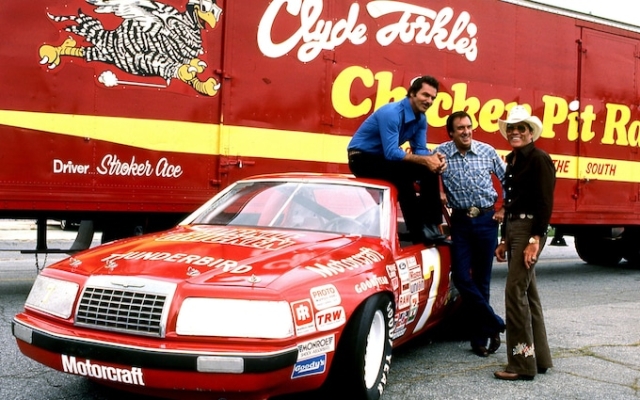 Burt Reynolds poses with Jim Nabors and Hal Needham during the filming of Stroker Ace Photo: Hulton
Burt Reynolds poses with Jim Nabors and Hal Needham during the filming of Stroker Ace Photo: Hulton
Hal Needham was born, to be a stuntman. As a teenager, he took «crazy» risks, long before he jumped out of planes, jumped off high-rise buildings and crashed into burning cars in an on-screen career that spanned 310 films and 4,500 television episodes.
In the late 1940s, Needham began working as a tree trimmer, clearing and trimming giant sugar maples in Arkansas. “I have always pushed the boundaries of what is possible, going as far as I can. I would do all sorts of crazy things,” he once said. “They called me Squirrel because I would climb to the top of a tree, take off my harness and hang by my toes from a branch 50 feet in the air.”
His collaboration with friend Burt Reynolds, with whom he made two films, Smokey and the Bandit, Hooper, two films, The Cannonball Run, and Stroker Ace, became cinematic legend. In Quentin Tarantino's Once Upon a Time in Hollywood, Brad Pitt played military veteran and stuntman Cliff Booth, the best friend of movie star Rick Dalton (Leonardo DiCaprio).
Tarantino's characters were inspired by Needham and Reynolds, with Pitt publicly recounting the «epic stories» of Needham breaking 56 bones, including his back twice, during his death-defying stunts. And now we have The Fallen Boy, Ryan Gosling's blockbuster celebration of the art of the stuntman, directed by former stuntman David Leitch, whose career follows the path of his hero Hal Needham.

Needham, born in 1931, grew up poor as the son of a sharecropper in the hills of Arkansas. He hunted squirrels with a .22 rifle to feed his family. After his education ended at 13 — «I hated school, I couldn't keep up and I knew I'd make an ass of myself,» he remarked — he was written off as «too small and too stupid» to do something in your life.
However, inside he knew that he had the “willpower” to succeed. After several low-paying jobs in the early 1950s, he enlisted in the paratroopers. He was deeply disappointed to spend three years serving in America, despite begging his commander to send him overseas to fight in the Korean War.
His break into Hollywood came by chance when a former paratrooper got him a job on the TV show You Asked for It. Needham's first professional stunt was remarkable. He had to sit in a dangerous situation on the landing gear of a Cessna 150 before jumping out and knocking a man off his horse while he was riding at full gallop.
Needham's fearlessness earned him a job in the film The Spirit of St. Louis, starring James Stewart. Needham's air force training paid off: he had to stand on top of the wing of an old biplane while it made loops. “I thought, ‘Wow. Look how much money I made. I think I’ll change jobs.” And that’s why I decided to become a stuntman, not a treetopper,” he recalls.
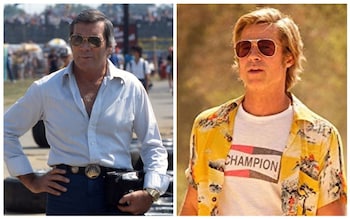 Hal Needham (left) ) was the inspiration for Cliff Booth, Brad Pitt's stuntman in Once Upon a Time in Hollywood
Hal Needham (left) ) was the inspiration for Cliff Booth, Brad Pitt's stuntman in Once Upon a Time in Hollywood
The memory of childhood poverty stayed with Needham, who didn't even see a movie until he was 10 years old. In later life, there was hardly an interview without him boasting that he was «the highest paid stuntman in Hollywood.» He spoke of his pride in receiving a $10,000 bonus for successfully coordinating a dangerous stunt in a canyon in which hundreds of marauding cattle trample stagecoaches.
Needham was fully aware of the dangers of stunt acting, especially in an era when security on film sets was often a sham. He once saw a stuntman killed during a «stirrup drag», a sequence in which the rider falls from a horse with his foot still in the stirrup, and is then pulled along by the animal. Needham watched helplessly as the stuntman was thrown into a fence post and died from a severe head injury. Years later, while Needham was directing the film Cannonball Run, a car accident occurred and stuntwoman Heidi von Beltz was paralyzed from the neck down.
When asked what he was thinking about during the risky stunts, Needham deadpanned, «I'm thinking about the remainder I got.» He was paid for each take of a stunt filmed, and sometimes he talked friendly cameramen into telling the director that they had missed a shot, so he was paid extra for reshoots. “Ching-ching, call,” he cackled as he described the ruse in an interview with NPR.
He deserved his money for being dangerous. In the 1950s CBS western «Have Gun, Will Travel,» he jumped 30 feet off a cliff onto a moving stagecoach without wearing any protective clothing. “The coach really looked small. It looked like a postage stamp,” he recalled. “The coach was brought in and I hit it right in the middle. But I pierced the top all the way to the armpits, and it shocked the people on the bus.”
Some of his greatest stunts were stunningly daring. In Arthur Penn's 1970 film Little Big Man, starring Dustin Hoffman and Faye Dunaway, he was one of a pair of stuntmen who had to jump from a speeding horse onto a runaway stagecoach. “Then we had to do a standing long jump from the back of one horse to the back of the next one over 14 feet,” said Needham. “I think no athlete can do this standing still.”
In the 1973 film White Lightning, starring Reynolds, he drove a car from a riverbank onto a moving river barge. In the 1976 sequel Alligator, he had to hang onto the side of a truck going 60 mph and jump off it just before it rolled on its side. Although Needham was a skilled driver—he had learned some tricks for driving cars filled with contraband alcohol on the back roads of Arkansas—this car stunt nearly cost him his life.
 Hal Needham's stunt from the movie «White Lightning» (1973)
Hal Needham's stunt from the movie «White Lightning» (1973)
In the 1974 John Wayne film McCue, Needham had to make a car flip over as it raced across a dry lake bed. Using a ramp to cause an accident was out of the question since it would have been visible (in Westerns, ramps could be hidden behind cactus bushes), so he had to improvise. “We built a 16-inch diameter cannon with one-and-a-half inches thick walls and welded it to the rear floorboard behind the driver's seat, pointing the muzzle into the ground,” Needham said.
In his 2011 autobiography, Stuntman! In my Hollywood life of car crashes, jumping out of planes, breaking bones and living a deadly life, Needham said he put too much gunpowder in the homemade cannon. The explosion sent the car flying 30 feet into the air. During the emergency landing, the stuntman broke his back, broke six ribs and punctured a lung. “However, I did come up with a very clever way to turn the car over,” he joked later.
He had always been phlegmatic about the devastation his career had taken on his body. «I've done stunts when I was in so much pain I could barely breathe, and yet I would go ahead and do it,» he said. He bathed in Epsom salts and took handfuls of Percodan tablets to cope with the pain. He once said that stuntmen knew that film companies did not want to pay compensation, so they kept silent about minor injuries. “It was bad for a stuntman to have a reputation as a victim, and even worse to report it,” he said.
His memoir, which has eye-catching chapter titles like «Bull____ Doesn't Take Pictures,» «From the Restroom to the Penthouse» and «Busier Than a One-Legged Man at an Ass-Kicking Competition,» is filled with stories about the movie stars he met after his debut in a 1961 “little movie” called “The Little Shepherd of Kingdom Come,” which became a vehicle for promoting country music singer Jimmie Rodgers.
Over the next two decades, he worked as a stunt double for James Stewart, Dustin Hoffman, and Dean Martin , Kirk Douglas and Burt Reynolds. He starred in 10 films with John Wayne and says he taught the famously pugnacious Duke «the right way to throw a punch.»
His most important relationship in Hollywood was with Reynolds. He became Reynolds' stunt double in the early 1960s after they met on the set of Riverboat. Their friendship grew, and after his divorce from Marie Arlene Wheeler in 1973, Needham accepted Reynolds' offer to live temporarily in the carriage house of his Holmby Hills estate in Los Angeles. Needham ended up staying there for 12 years.
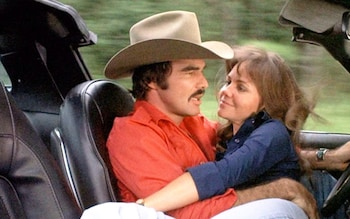 Burt Reynolds and Sally Field in Smokey and the Bandit
Burt Reynolds and Sally Field in Smokey and the Bandit
It was a truly macho friendship—they sometimes communicated by giving the middle finger salute—and they had enough gold chains and medallions to fill a Fort Knox vault. Reynolds later said that if Needham had been a woman, they would have had a «perfect marriage.» «We were two guys who thought the other one was great and at the same time were happy that there was just a mirror there,» he said.
Needham finally moved out to marry his second wife, actress Dani Janssen, widow of Runaways star David Janssen. Reynolds joked that Dani was the first girl Needham dated «with an IQ above 70.» For a Western-themed wedding, best man Reynolds and groom Needham arrived at All Faiths Community Church on horseback.
Reynolds helped Needham make the unusual transition from stuntman to director, convincing studio executives to back Smokey and the Bandit in 1977. The film grossed over £120 million and they delivered. Needham joked that they crashed more than 100 cars during the filming of the film and its sequel.
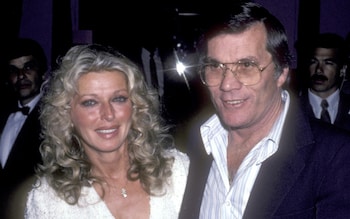 Hal Needham and his wife Dani Janssen , 1981 Photo: Ron Galella
Hal Needham and his wife Dani Janssen , 1981 Photo: Ron Galella
In 1979, they worked on the weird and wonderful stunt extravaganza Hooper, in which Reynolds played an aging stuntman who wants to prove he still has it in him by flying across a chasm in a jet-powered car. “I liked Hooper. I had so much fun with it. All the stunts were my idea. I thought I knew what would be impressive and I had to make fun of the directors who were assholes. It was payback. It was my favorite movie,” Needham said.
The pair achieved their greatest commercial success in 1981 with The Cannonball Run, a screwball comedy about illegal coast-to-coast car racing that starred Roger Moore, Farrah Fawcett, Jackie Chan and Sammy Davis Jr. to the sequel Cannonball Run II (1984), in which cameo roles were played by Dean Martin and Frank Sinatra.
Needham used some of his new fortune to purchase a NASCAR team and also financed the Budweiser Rocket Car, which was recorded traveling at over 739 mph. Needham claimed that this feat made him the first land vehicle to break the sound barrier. In 1986, Needham, who once said he would never win an Oscar but would definitely be a «rich son of a bitch,» was awarded, along with William L. Fredrick, a Science and Technology Award for the design and development of Shotmaker. An elite camera car and crane, which significantly improved the filming of action scenes.
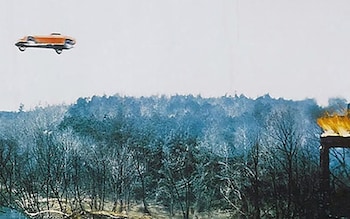 Jump car from Hal Needham' ;film «Hooper»
Jump car from Hal Needham' ;film «Hooper»
Needham, who was 82 when he died of cancer on October 25, 2013, lived a very full life, with enough adventure to warrant the writing of three biopics. In addition to his stunt work, Needham worked as a bit player. He was killed off in the Star Trek pilot and was an extra in Blazing Saddles and Chinatown. His real life was also full of incidents. He once escaped the Russian invasion of Czechoslovakia by sneaking across the Austrian border and smuggled out a waitress he met in the process.
In the final years of his career, the retired Hollywood legend spent his time golfing and living. Along with third wife Ellyn Wynn, he lamented the fakery that computer-generated special effects brought to film stunts. “This is B.S. They don't work,» he complained.
Fall Guy's credit list lists 95 people responsible for coordinating combat and action scenes in David Leitch's film, including the first-ever «Stunt Artist.» This list would bring a smile to the face of Needham, a man who said his greatest achievement was being «the No. 1 stuntman in the world for 10 years.»

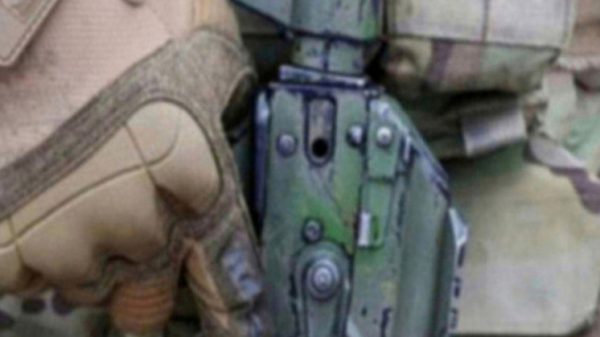

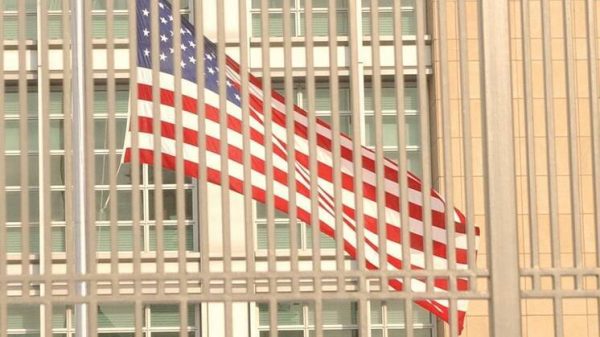



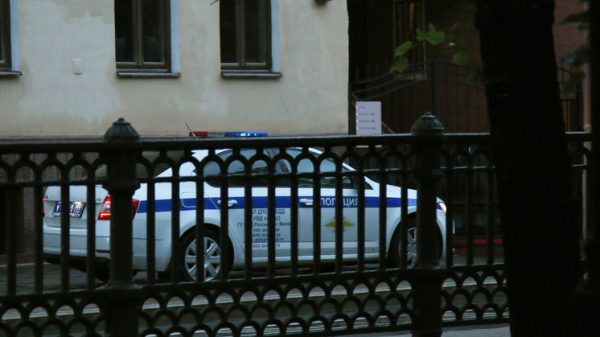
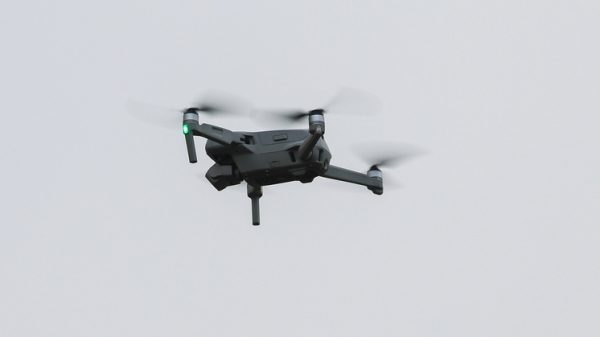
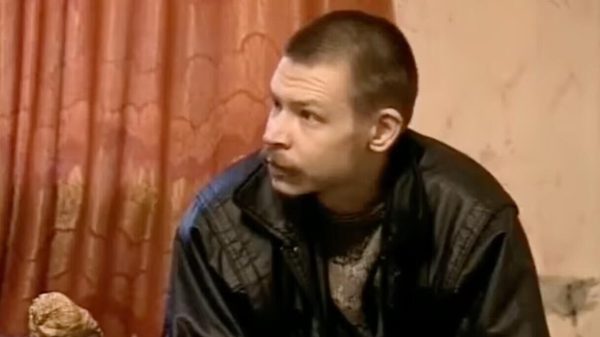
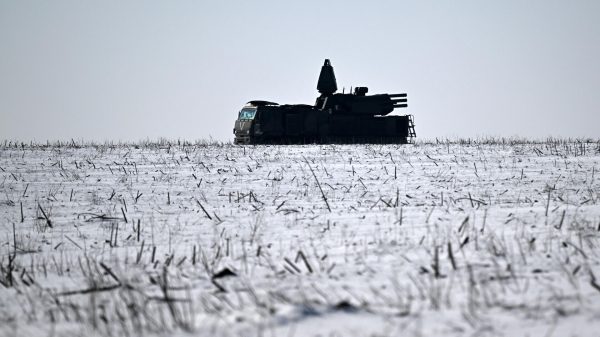

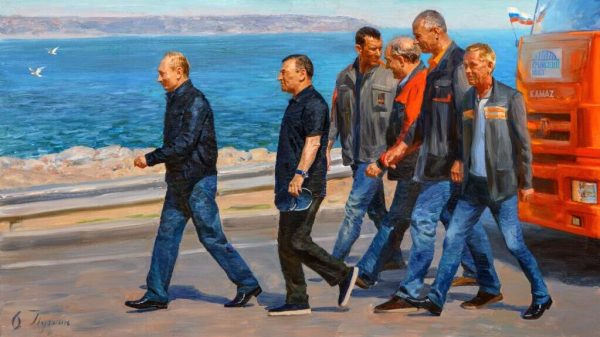
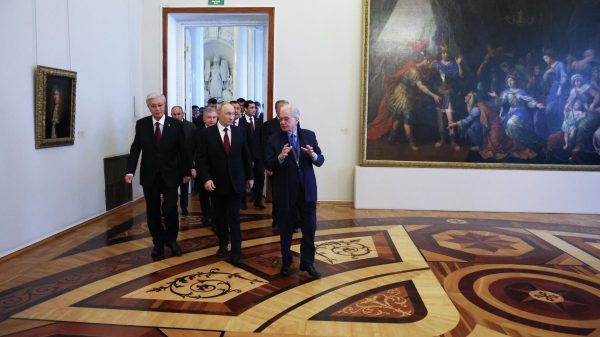
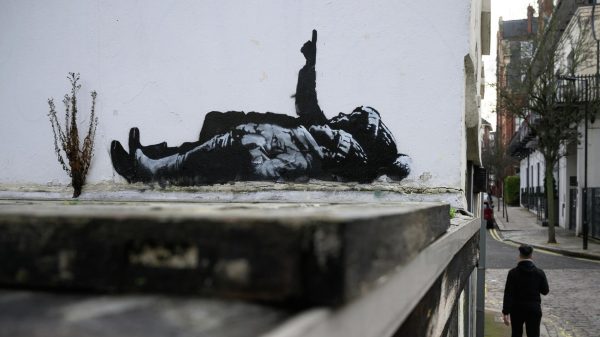

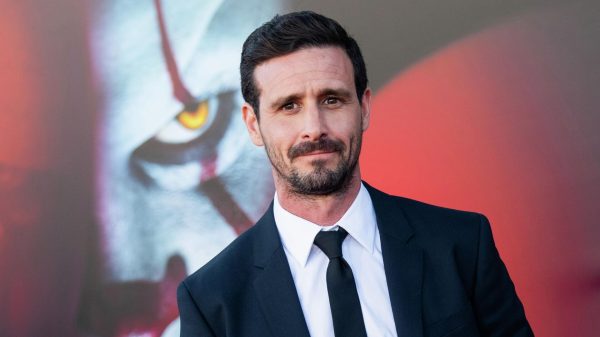
















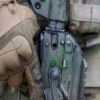




















Свежие комментарии